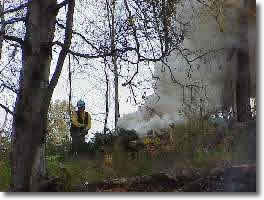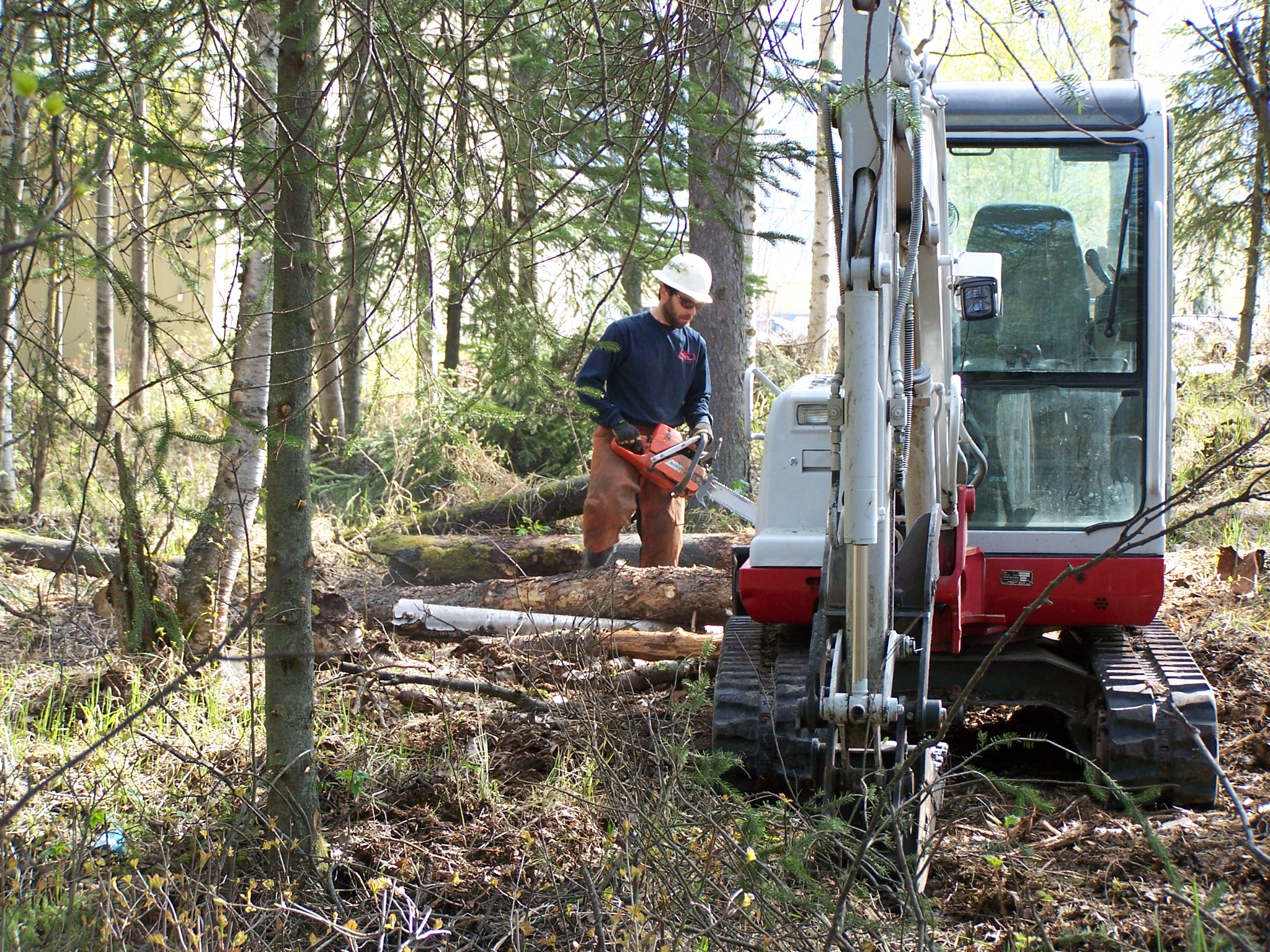Wildfires in Anchorage
The hazard of wildland fire in the Municipality of Anchorage is heightened due to the existence of homes within the boreal forest. A wildland fire that ignites homes may likely convert to a structural fire disaster as homes become the primary fuel source that drives subsequent structural fires. To limit the impacts of a wildland fire and mitigate a potential disaster, Firewise education and treatment of forest fuels is recommended. Firewise is a national program that focuses on the principles that define how a home and its immediate surroundings, called the home ignition zone, can survive a wildland fire. Treating forested areas adjacent to neighborhoods limits the spread and intensity of wildland fire.

Firewise homes are truly the most critical component of protecting lives and property. AFD's Firewise program provides information for homeowners to improve their home's capability to survive a wildland fire and emphasizes the need to maintain these modifications on an annual basis. By managing vegetation around the home and appropriate storage of combustible items such as firewood away from the home, a structure's vulnerability to wildland fire can be greatly decreased. Firewise education is delivered to local residents through community council meetings, the internet, radio and television advertisements, and scheduled Firewise home assessments. Direct communication has proven to be the most effective means to influence homeowner behavior.
The regional ecosystem and associated vegetation types support fire naturally due to the species composition of trees, shrubs and grass. The native Bluejoint Reedgrass spreads fire quickly during spring's pre-green up period. Spruce trees support and sustain wildland fire across the landscape. To limit the spread of fire, mitigation efforts focus on two treatments: 1) the Bluejoint Reedgrass is replaced with other native grasses that are shorter and green-up faster in spring; and 2) spruce trees are thinned and pruned.
In the Municipality of Anchorage, the study area for wildfire exposure is 345,309 acres. Approximately 17,088 acres within the study area have values at risk due to exposure to hazardous wildfire conditions. These acres could be treated directly to limit fire spread on that specific parcel, or they could be protected by mitigating adjacent forested areas. Treatment means to modify the existing vegetation by changing the forest stand structure and composition to slow fire's rate of spread. The Anchorage Fire Exposure Model (AFEM) is the objective tool used by AFD to analyze fuels, fire behavior, and suppression response capability.
Direct fire mitigation treatment reduces the potential fire behavior on the land being treated, such as the home ignition zone around a structure on private land. The intent is to limit the spread of fire in the area surrounding the structure to reduce its ignition potential. AFD has worked with private landowners to treat approximately 900 acres of land where homes exist.
Indirect fire mitigation treatment is done to protect areas exposed to fire, allow for safe egress of an area exposed to fire, reduce the ignition potential of an area, and to provide for increased fire suppression capability. By forming a barrier that slows the spread of fire into a neighborhood, buffer treatments can effectively mitigate wildland fire for an area much larger than the buffer treatment itself. AFD has treated over 800 acres of public land. Partnering agencies have treated an additional 700 acres of land, totaling approximately 1,500 acres of indirect fire mitigation.

The total area of high hazard forests throughout the Municipality exceeds the number of acres that can be feasibly treated through forest management primarily due to cost. AFD follows globally accepted principles to drive forest treatment activities based on the available funding.
Private land owners are responsible for making their homes Firewise and for treating the home ignition zone to reduce their vulnerability to wildland fire. AFD will support homeowners through education of the Firewise principles and financial assistance for tree removal with the available funding.
Public land owners are responsible for treating and maintaining their respective land base to limit the spread of wildland fire into developed lands. AFD will support forest land fuel treatment activities on public lands based on the relative hazard associated with each parcel and its proximity to developed neighborhoods.